|

    
THE ISSUE: LEAD EXPOSURE
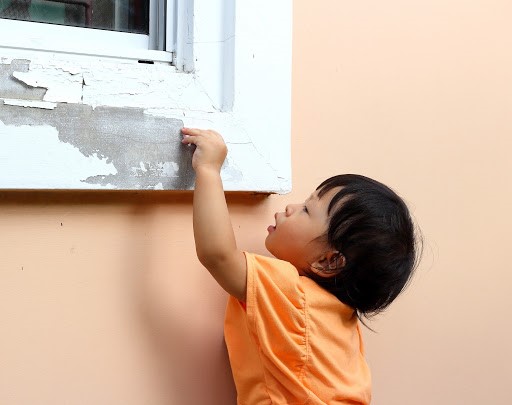 Despite progress in reducing lead poisoning, approximately 4,000 New Jersey children were found to have elevated blood lead levels (EBLL) (at/above 5µ/dL) according to the most recent state data from the 2020 State Childhood Lead Report. These are only the children who have tested positive, and with a smaller number of children being tested compared to 2018 there surely being more with elevated blood lead levels. Only 36.3% of children ages 6 to 26 months of age were tested in 2019, even though the American Academy of Pediatrics recommends 5 risk assessments between the ages of 6 months and 2 years, with additional yearly tests being recommended from age 3 to 6. Children are typically the most vulnerable population when it comes to lead poisoning, although it can impact adults as well. Despite progress in reducing lead poisoning, approximately 4,000 New Jersey children were found to have elevated blood lead levels (EBLL) (at/above 5µ/dL) according to the most recent state data from the 2020 State Childhood Lead Report. These are only the children who have tested positive, and with a smaller number of children being tested compared to 2018 there surely being more with elevated blood lead levels. Only 36.3% of children ages 6 to 26 months of age were tested in 2019, even though the American Academy of Pediatrics recommends 5 risk assessments between the ages of 6 months and 2 years, with additional yearly tests being recommended from age 3 to 6. Children are typically the most vulnerable population when it comes to lead poisoning, although it can impact adults as well.
Approximately a quarter of all children are estimated to have been exposed to lead when the dangerous EBLL threshold was lowered to 3µ/dL at the recommendation of CDC. We know that there is no safe level of lead in children. The effects are usually permanent. Serious consequences of lead poisoning include: asthma, developmental delay, learning difficulties, hearing loss, seizures, and pica.
However, there is hope. Childhood lead poisoning is entirely preventable. We are heartened at the passing of new legislation in 2020 reducing the risk of lead exposure through paints in rentals, and to see the steps that have been taken within the last 3 years. However, until the hazard of lead exposure is one that has been virtually eliminated from our children’s lives there will still be actions and steps needed to make this a reality. The children of New Jersey deserve no less.
SOURCES OF LEAD POISONING
There are many recognized sources of lead that children can be exposed to, with the various examples typically being categorized across the following types of sources:
- Paint
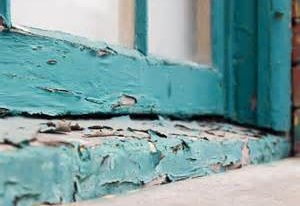 Contrary to popular belief, water is not the number one source of lead poisoning. Lead based paints are the most common source of lead exposure for toddlers and young children. This is because of old housing. New Jersey, being one of the oldest states, has an old housing supply. By most estimates using available census data it is speculated that up to 70% or more of the state’s housing and apartment units were built before the 1980s. Lead-based paint was only made illegal in 1978. The risk is considered highest in homes built prior to the 1960s, with up to 42% of homes in counties like Essex, Passaic, and Union falling under that category according to the NJDOH. Lead-based paints may also be found in aged products and antiques that have been passed down from older generations. Additionally, surrounding soil is often impacted by lead-based paints. As a result of these trends, our advocacy and remediation efforts must center housing. Contrary to popular belief, water is not the number one source of lead poisoning. Lead based paints are the most common source of lead exposure for toddlers and young children. This is because of old housing. New Jersey, being one of the oldest states, has an old housing supply. By most estimates using available census data it is speculated that up to 70% or more of the state’s housing and apartment units were built before the 1980s. Lead-based paint was only made illegal in 1978. The risk is considered highest in homes built prior to the 1960s, with up to 42% of homes in counties like Essex, Passaic, and Union falling under that category according to the NJDOH. Lead-based paints may also be found in aged products and antiques that have been passed down from older generations. Additionally, surrounding soil is often impacted by lead-based paints. As a result of these trends, our advocacy and remediation efforts must center housing.
- Water

Lead-contaminated drinking water has become one of the most well-known forms of exposure to lead for many of New Jersey’s residents, with many municipalities recently facing or still grappling with the issue of their drinking water becoming a source of exposure. Within recent years the levels of lead within the drinking water of many of New Jersey’s municipalities have been found to be at dangerous levels, with over a million of the state’s residents being exposed. More often than not this is due to aging public fixtures such as pipes, which often can be found in areas where both the housing stock and its supporting infrastructure is half a century or more in age. Many of New Jersey’s residents within these affected areas have been forced to take on additional costs by buying water from private sources, or continue to expose themselves in the worst of cases.
-
Airborne
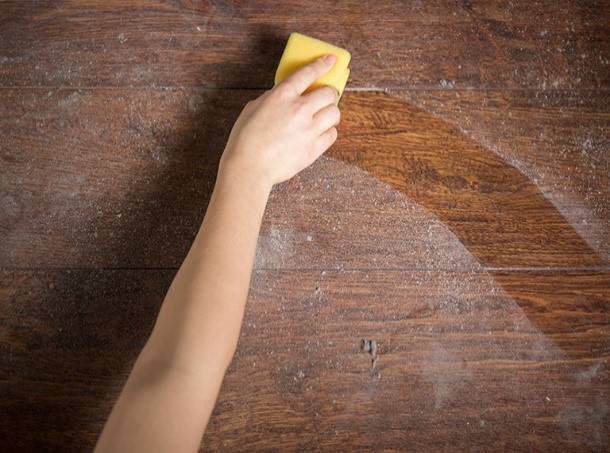 While airborne sources are not as common as they were during prior generations, due to more prominent sources such as leaded gasoline being fully phased out by the 1990s, there still are certain hazards that exist. Lead dust still exists as a threat to children through accumulation in older housing, and through exposure from their parents and guardians working at various industrial jobs. Residents employed at factories, auto-garages, and home renovation businesses have the potential to bring lead dust coated on clothing and equipment back into their homes, risking exposure to their families as a result. While airborne sources are not as common as they were during prior generations, due to more prominent sources such as leaded gasoline being fully phased out by the 1990s, there still are certain hazards that exist. Lead dust still exists as a threat to children through accumulation in older housing, and through exposure from their parents and guardians working at various industrial jobs. Residents employed at factories, auto-garages, and home renovation businesses have the potential to bring lead dust coated on clothing and equipment back into their homes, risking exposure to their families as a result.
EFFECTS AND WARNING SIGNS OF LEAD POISONING
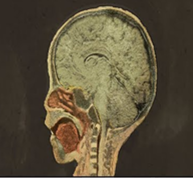 The dangers of lead exposure are some of the most critical to a child’s ability to safely develop into a healthy and productive adult. As opposed to poisoning by other types of harmful substances, lead can permanently stunt an individual’s ability to grow and develop years beyond the initial exposure. This can have disastrous effects on a child’s future prospects, reducing their likelihood of completing their primary education, and translating into a lack of personal and professional opportunities in their later adult lives. The dangers of lead exposure are some of the most critical to a child’s ability to safely develop into a healthy and productive adult. As opposed to poisoning by other types of harmful substances, lead can permanently stunt an individual’s ability to grow and develop years beyond the initial exposure. This can have disastrous effects on a child’s future prospects, reducing their likelihood of completing their primary education, and translating into a lack of personal and professional opportunities in their later adult lives.
With the effects of lead exposure affecting and threatening our states future generations the most, the need to act is only outlined by the many disastrous impacts that it is known to have.
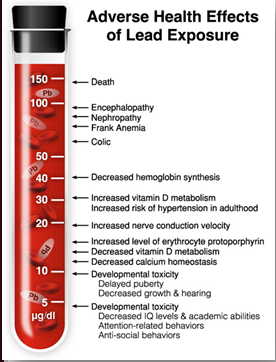 Studies have definitively shown that moderate to high levels of lead exposure can cause any of the following types of damage and more: Studies have definitively shown that moderate to high levels of lead exposure can cause any of the following types of damage and more:
- Brain damage, lowered IQ, and behavioral issues
- Learning disabilities that lead to reduced school performances and lower rates of high-school graduation which ultimately leads to higher rates of incarceration
- Stunted growth and interference with red blood cell production
- Hearing loss and reduction of motor skills
- Future bouts of lead poisoning if absorbed into the bones
- Seizures, comas, and death
(Sources: US National Library of Medicine – Lead Toxicity / Lead and Skeletal Health)
PREVENTION
 Short-Term Short-Term
Get tested! Test your home, check your school or childcare facilities, and, most importantly, get your children tested!
For parents worried about coverage
If your child has Medicaid, NJ FamilyCare, or another type of commercial insurance (for example, group insurance through an employer) and has not been tested according to the above schedule, or you are not sure if your child has been tested, contact your pediatrician’s office. Ask the nurse for an appointment or to tell you when your child was tested and the results.
If you have health coverage through Medicaid or NJ FamilyCare, the cost of lead testing and any follow-up treatment your child might need will be covered. In 1995, New Jersey passed a law to also require all commercial health insurers that cover groups of 50 or more people to cover the cost of lead screening (and immunizations) without any deductibles.
If you have no insurance coverage for your child and cannot afford to pay, you may call your local public health department for a free test. Call your municipal center or town hall if you cannot find the number for your town’s health department, or call the New Jersey Department of Health and Senior Services at 609-292-5666. Or you may have your child tested at a federally qualified health center (for locations, check the NJPCA website).
The test for determining the blood level of lead takes only about 10 minutes, and the final results are back in a week.
***Please refer to the Lead Resource Guide for more.
Long-Term
 Together, we can make lead poisoning a thing of the past. We can eliminate lead risks both in water infrastructure and in our homes. To do this, we need rigorous testing as well as the resources to remediate once lead is found. We need our state to invest the resources. We need money to resource to prevent, and resource to remediate. The most comprehensive and permanent solution requires. The Network continues to advocate for both state and national policy. Most recently (this past June), in conjunction with our national partner the Green and Healthy Homes Initiative, we signed on to support the Comments on Review of the Dust-Lead Post-Abatement Clearance Levels, Proposed Rule which asked the EPA to lower the soil lead hazard standards to health-protective levels. Together, we can make lead poisoning a thing of the past. We can eliminate lead risks both in water infrastructure and in our homes. To do this, we need rigorous testing as well as the resources to remediate once lead is found. We need our state to invest the resources. We need money to resource to prevent, and resource to remediate. The most comprehensive and permanent solution requires. The Network continues to advocate for both state and national policy. Most recently (this past June), in conjunction with our national partner the Green and Healthy Homes Initiative, we signed on to support the Comments on Review of the Dust-Lead Post-Abatement Clearance Levels, Proposed Rule which asked the EPA to lower the soil lead hazard standards to health-protective levels.
Legislative Preventative Action
In New Jersey, the Network considers the following lead-focused policy changes a top priority going forward through 2021:
- Requiring Lead Paint Inspections, S1147 (Ruiz), A1372 (Holley, Wimberly, Benson, Mukherji) – would create the requirement for require lead paint inspections prior to home purchases and tenant turnover, in addition to the creation of educational programs regarding lead exposure/poisoning.
- Requirement of municipalities to conduct lead paint inspections in one- and two-family rental homes, S1282 (Turner), A1233 (Schaer, Holley, Wimberly, Mukherji) – proposal for the requirement of municipalities to inspect every single-family and two-family rental dwelling located within the municipality for lead-based paint hazards at least once every five years, with the exception of two year inspections for properties known to have had remediation work recently completed.
- Creation of new methods to address the effects low-level lead exposure, A216 (Tucker/Jasey) – would enable school personnel to know if a child has a history of elevated blood lead levels and will require schools to educate staff and parents about the dangers of lead exposure.
Past Legislative Success
 Advocacy for political and social changes regarding the states attentiveness to lead exposure in New Jersey has proven effective in mobilizing the proper responses to it. In New Jersey the #LeadFreeKids Campaign successfully advocated for a stronger resource pool of 10 million dollars to be allocated to childhood lead poisoning prevention efforts. This victory came in addition to the NJ Department of Health’s lowering of their previous standard of dangerous blood lead levels from 10µ/dL to the federally recognized level of 5µ/dL. Advocacy for political and social changes regarding the states attentiveness to lead exposure in New Jersey has proven effective in mobilizing the proper responses to it. In New Jersey the #LeadFreeKids Campaign successfully advocated for a stronger resource pool of 10 million dollars to be allocated to childhood lead poisoning prevention efforts. This victory came in addition to the NJ Department of Health’s lowering of their previous standard of dangerous blood lead levels from 10µ/dL to the federally recognized level of 5µ/dL.
During the summer of 2021 the Network and its allies successfully advocated for the passing and signing of a new lead paint inspection law, requiring lead paint inspections on certain rental properties, in addition to during tenant turnover.
The Network has continued to partner with the Green and Healthy Homes Initiative, Isles, Inc., Advocates of Children for New Jersey, the Fund for New Jersey and New Jersey Health Initiatives to promote a plan eliminating childhood lead poisoning in the state within ten years. Click here to view the action report.
 Abatement and Remediation Abatement and Remediation
The mitigation or removal of a lead-based risk is needed when an existing source of lead contamination has been identified. Depending on the source, the solution taken can vary, with structures containing lead-based paints often needing wall covers, removal of existing paints, and in some cases the complete removal of a fixture or part of a structure. Water-based cases of exposure usually point to a more systemic source that expands beyond an individual property, often requiring entire patches of infrastructure to be removed and replaced.
Spotlight: Newark
Newark, New Jersey’s largest city has successfully combatted the lead crisis facing its waterlines that was discovered in 2017, when the city failed its third consecutive water lead level test. Through the creation of a lead pipe remediation program, the progress of which has been well ahead of schedule, and the distribution of water filters, the City of Newark has shown itself as the creators of a successful model in the fight against lead poisoning and exposure. In addition, the EPA has provided the City of Newark a 7.5 million dollar grant in order address issues regarding lead within and around its public schools.
Click here to see the Network’s summary on the successes of Newark’s lead pipe remediation program

Lead Exposure Prevention during COVID-19
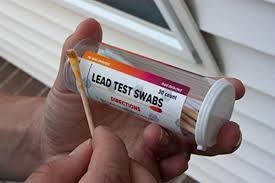 ** We are now in our homes more than ever, some people are using this opportunity to do home projects or renovations and children are learning at home. Now, more than ever, it is important to test for lead. ** ** We are now in our homes more than ever, some people are using this opportunity to do home projects or renovations and children are learning at home. Now, more than ever, it is important to test for lead. **
Here are some tips from the Network:
- Get your children tested for lead early and often.
- Take care of any chipped paint.
- Check if your water provider use lead service lines.
- Test for lead before any home projects renovations, following EPA guidelines.
- Join the Network in advocating for more statewide measures against lead poisoning
Lead Poisoning and Black Lives Matter
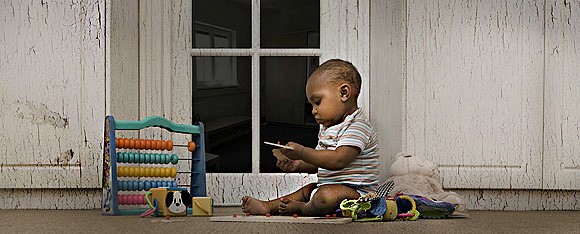 Lead poisoning, although it impacts children of all races, disproportionally impacts children of color. Specifically, black children are twice as likely as white children to have higher blood lead levels (source). Moreover, lead poisoned children are more likely to be incarcerated later in life (source). Lead poisoning one part of a larger picture of environmental racism. Lead poisoning is one consequence of structural racism and redlining in this country. To be committed to racial equity, we must address this crisis and its disproportionate impacts. Lead poisoning, although it impacts children of all races, disproportionally impacts children of color. Specifically, black children are twice as likely as white children to have higher blood lead levels (source). Moreover, lead poisoned children are more likely to be incarcerated later in life (source). Lead poisoning one part of a larger picture of environmental racism. Lead poisoning is one consequence of structural racism and redlining in this country. To be committed to racial equity, we must address this crisis and its disproportionate impacts.

Within New Jersey African-Americans (represented in black) often live in the most dangerous areas regarding lead exposure through water service lines, as opposed to other demographics such as Caucasian-Americans (represented in yellow).
Sources: US Census 2018 Estimate (left) and NJFuture Lead Service Line Map (right)
|